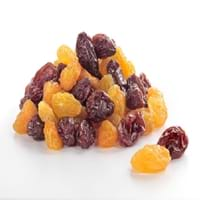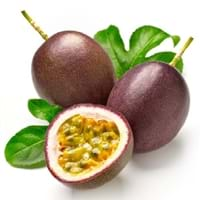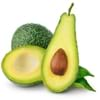Health Benefits
Acidity treatment, Cancer prevention, Good for diabetics, Prevents constipation, Prevents Anaemia
Asthma treatment, Heart care, Regulates Blood Sugar, Muscle pain relief, Reduces nervous tension
General Benefits
Boosts immune system, Cures fever, Eye care, Fights against infections, Strengthens bones
Boosts immune system, Controls blood pressure, Digestive aid, Fights against infections, Helps in weight loss
Skin Benefits
Anti-aging benefits, Reduces wrinkles, Skin rejuvenation
Anti-aging benefits, Skin revitalization
Hair Benefits
Protects hair
Protects hair
Allergy Symptoms
Anaphylaxis, Asthma, Breathing difficulty, Coughing, Drop in blood pressure, Hives, Skin rash, Stuffy nose, Swelling of mouth, tongue or lips, Wheezing
Anaphylaxis, Breathing difficulty, Decrease in blood pressure, Dizziness, Skin rash, Swelling of face, Swelling of mouth, tongue or lips
Side Effects
Allergic reaction
Stressed heart, Nausea, Vomiting, Possibly unsafe during pregnancy
Lactating Women
Not Available
Yes
Best Time to Eat
Any time except an hour after meal
As a snack in the late afternoon, Don't consume at night and before bed, Morning time (before lunch), Strictly avoid empty stomach
Vitamin B5 (Pantothenic Acid)
Not Available
Vitamin C (Ascorbic Acid)
Vitamin K (Phyllochinone)
Calories in Fresh Fruit with Peel
Not Available
Calories in Fresh Fruit without Peel
Not Available
Calories in Frozen Form
Not Available
Not Available
Calories in Dried Form
Not Available
Calories in Canned Form
Not Available
Season
All seasons
All seasons
Varieties
Dark raisins, White or golden raisins, Sultanas and Currants
Australian Purple, Common Purple, Kapoho Selection, Pratt Hybrid, University Selection No. B-74, Waimanalo Selection and Yee Selection
Seedless Variety
Not Available
No
Color
Black, Blue, Green, Purple, Yellow
Purple, Yellow
Inside Color
Brown
Yellow
Origin
Central Europe, Western Asia
Argentina, Brazil, Paraguay
Grows on
Not Available
Not Available
Soil Type
Clay loam, Sandy loam
Sandy loam
Climatic Conditions
Warm
Frost free, Sunny, Warm
Facts about
- 30th April is known as National Raisin Day.
- Fresno, California is known as raisin capital of the world.
- Half of world's raisin supply is produced in California.
- Passion fruit tree can grow up to 20 feet in a year.
- More than 200 species of passion fruit are found near Amazon river.
- Oil extracted from its seeds is used in various cosmetics.
Top Producer
United States of America
Brazil
Other Countries
Afghanistan, Argentina, Australia, Chile, China, Iran, South Africa, Turkey, Uzbekistan
Colombia, Ecuador, Indonesia, Kenya, Peru
Top Importer
Europe
Brazil
Top Exporter
Turkey
Ecuador
Botanical Name
Vitis Vinifera
Passiflora edulis
Synonym
Not Available
Passiflora edulis f. edulis or Passiflora edulis f. flavicarpa
Subkingdom
Tracheobionta
Tracheobionta
Division
Magnoliophyta
Magnoliophyta
Class
Magnoliopsida
Magnoliopsida
Subclass
Not Available
Dillenhidae
Order
Vitales
Malpighiales
Family
Vitaceae
Passifloraceae
Species
Vitis vinifera
P. edulis
Generic Group
Grape
Passion Flower
Difference Between Raisin and Passionfruit
We might think that Raisin and Passionfruit are similar with respect to nutritional value and health benefits. But the nutrient content of both fruits is different. Raisin and Passionfruit Facts such as their taste, shape, color, and size are also distinct. The difference between Raisin and Passionfruit is explained here.
The amount of calories in 100 gm of fresh Raisin and Passionfruit with peel is 299.00 kcal and Not Available and the amount of calories without peel is Not Available and 97.00 kcal respectively. Thus, Raisin and Passionfruit belong to and category.These fruits might or might not differ with respect to their scientific classification. The order of Raisin and Passionfruit is Vitales and Malpighiales respectively. Raisin belongs to Vitaceae family and Passionfruit belongs to Passifloraceae family. Raisin belongs to Vitis genus of Vitis vinifera species and Passionfruit belongs to Passiflora genus of P. edulis species. Beings plants, both fruits belong to Plantae Kingdom.









